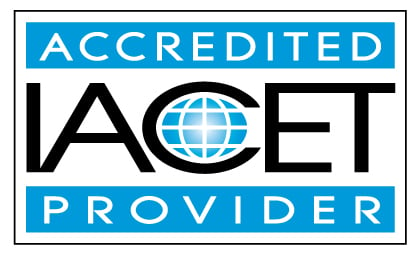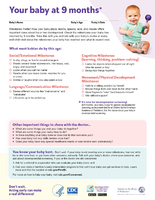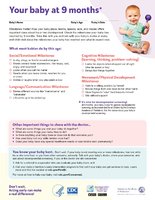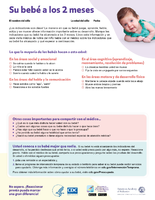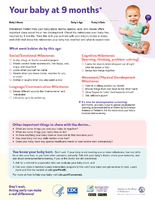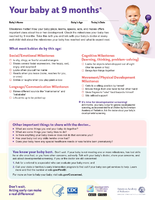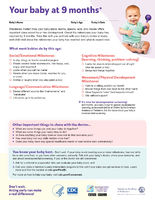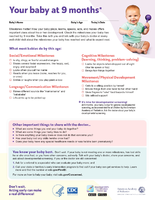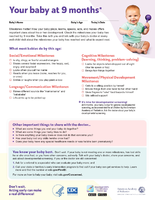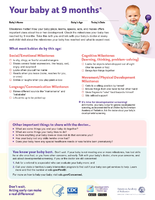45-Hour Infant and Toddler Curriculum
Are you passionate about caring for the youngest members of our community? ChildCareEds 45-Hour Infant and Toddler Curriculum Course is your essential gateway to a fulfilling career in infant and toddler child care. This course equips you with the skills and knowledge necessary to provide the best care and education to infants and toddlers, from birth to age 3. By understanding the unique needs and developmental milestones of this age group, you become an essential caregiver who shapes the early experiences of these young learners, setting them on a path to lifelong success.
*Maryland Providers*
This Curriculum Training (this is the online version of the instructor-led Methods and Materials training) satisfies half of the MSDE requirement of 90 hours for child care teachers and directors. This course and a 45-hour growth and development course are required to complete the 90-hour certification for child care. If you have been issued a voucher from MSDE for this course it MUST be completed 2 weeks before the expiration date that is on your voucher. Please check your voucher for this date. Training Approval number PSO-30299 Aligns with MD Staff Credential levels 2-4. Earns 4.5 CEUs/45 clock hours.
Students who wish to follow along with a book can purchase on their own, The Creative Curriculum for Infants, Toddlers and Twos by Diane Trister Dodge ISBN: 1879537400
ISBN13: 9781879537408, This book is NOT required but can be a helpful resource
By the end of this training, the learner will be able to:
- Demonstrate an understanding of how genetics and environment influence child growth and development.
- Demonstrate an understanding of the OCC feeding regulations and monitoring requirements.
- Identify resources addressing health, safety and nutrition topics (CPR, 911, CDC, WIC, Poison Control)
- Identify strategies for providing appropriate care for infants and toddlers with chronic health issues
- Identify recommended medical and immunization schedules for children birth through age three
- Identify strategies for effective communication with families.
- Give examples of ways to apply and model ethical behavior and professional integrity with families.
- Demonstrate an understanding of how to use transitions for various age groups and for different parts of the school day.
- Identify appropriate activities for children birth through age three
- Demonstrate understanding of observational techniques to track skill development and individual need.
- Demonstrate understanding of the harmful effects of excessive sun exposure in infants and young children.
- Demonstrate understanding of the importance of predictable and consistent care.
- Define Developmentally Appropriate Practice
- Describe common myths and facts about safe sleep for infants and young toddlers.
- Describe infant/toddler nutritional needs.
- List recommended feeding schedules and identify strategies for introducing new food for children birth through age three.
- List benefits to a multicultural and inclusionary environment.
- Describe the impact of culture on infant and toddler development
- List and review tracking systems to monitor the daily feeding schedule of infants and toddlers
- Explain appropriate crib guidelines for caregivers to ensure safe sleep for infants and young toddlers.
- Identify theory and theorist in relation to child development.
- Identify the differences in major theories.
- Give examples of strategies that reduce stress in infants and young children.
- Demonstrate an understanding of cognitive development as it relates to science in infants and toddlers.
- Demonstrate an understanding of typical and atypical development from birth to age 2..
- Identify the stages and milestones of development from birth to age 2.
- Demonstrate an understanding of brain development in children birth through age three.
- Demonstrate appropriate caregiver responses to different infant/toddler temperaments.
- Identify the need to maintain individual feeding schedules for infants.
- Demonstrate an understanding of inclusionary practices.
- Identify resources for referral and specialized services.
- Identify procedures that will promote a safe environment (indoor and outdoor).
- Demonstrate an understanding of individual planning.
- Demonstrate an understanding of teacher vs. child directed activities.
- Identify curriculums specific to children birth through age three
- Identify the components of: 1. Greeting and Departure 2. Feeding 3. Diapering and Toileting 4. Dressing 5. Sleeping
- Demonstrate an understanding of how to develop appropriate daily schedules that promote routines. (1 hr)
- Demonstrate understanding of appropriate interaction with infants and toddlers.
- Identify appropriate practice for the identification, prevention, and treatment of communicable diseases in childcare.
- Demonstrate how to develop policies and procedures that promote good hygiene
- Demonstrate how theory is reflective in the child care environment.
- Demonstrate an understanding of how to implement an Individual Family Support Plan.
- Demonstrate understanding of developing strategies for involving parents in the child care setting.
- Give examples of strategies caregivers can use to ensure safe sleeping habits and the prevention of SIDS/SUIDS in infants.
- List the most common reasons why infants and toddlers bite.
- Give examples of strategies to prevent traumatic brain injuries in infants and young children.
- Identify the signs of child abuse and neglect.
- Demonstrate understanding of the importance of parent/caregiver relationship
- Demonstrate an understanding of the ADA.
- Identify strategies for the child care provider that will promote successful child development.
- Demonstrate an understanding of developmentally appropriate practices for infants and toddlers with developmental, emotional, cognitive, language and/or physical needs.
- Identify strategies to ensure appropriate infant and toddler supervision.
- Identify the components of a lesson plan for infants and toddlers.
- Identify adaptations to materials and equipment for children with diagnosed special needs or delay
- Demonstrate understanding of the content and implications of OCC environment regulations and supervision requirements
- Define the term multiculturalism and how it relates to the child's environment.
- Identify ways to help parents and infants/toddlers handle separation and attachment.
- Identify infant and toddler materials and equipment.
- Demonstrate an understanding of how available materials and equipment guide activity development
- Demonstrate an understanding of how appropriate material and equipment promotes play.
- Identify strategies for integrating culture and diversity into an infant and toddler program
- Define healthy practices to mitigate the spread of germs and decrease the likelihood of SIDS in infants and toddlers.
- Demonstrate an understanding of the benefits of individualized learning
- Identify strategies to assist children with food allergies/feeding concerns.
- Identify the requirements of an appropriate environment that will promote free exploration and manipulation.
- Demonstrate assessment techniques to track skill development and individual need.
- Criteria to earn CEUs:
- Certificates are awarded when the following criteria have been met by the learner:
- Class has been paid in full
- All material has been reviewed
- All review questions and final test have been completed with a passing score of 80% or higher.
- Learning Assessment Method:
- Learners will be assessed through questions after every section is completed. Learners will not be
allowed to proceed to the next section of the training until all questions have been answered correctly.
Learners will be presented with a final test composed of true/false and multiple choice questions.
Upon successful completion of the training, learners will receive their certificate by email.
- Learning Methodology:
- Online material will be presented in the form of slides,
accompanied with speech. Videos will be used to demonstrate ideas and concepts. Charts and tables
will be used for illustration.
- Logistics/Required Technology:
- A stable internet connection is required for the completion of this course. Users are highly encouraged to take their online course on Google Chrome on either a laptop or desktop computer. Speakers and/or headphones are also required to hear speech.
- Payment Policy:
- Payments need to be made in full. No refunds will be issued after starting the class.
- Proprietary or conflict of interest disclosure:
- Unless otherwise stated in the course description none of H & H subject matter experts and editor has any conflict or proprietary interests related to the material they prepared in this course.
- Support Services:
- Please visit our contact us page
You are purchasing a session of an online training that includes online assessments. Your certificate will be emailed to you once you pass the final exam with a passing grade of 80%.
Your certificate will bear the name you provided to us when you signed up. For support and questions regarding the material presented in this class please contact us at info@childcareed.com. Please consult our frequently asked questions page for other questions or feel free to contact us.
No prerequisites are required for the completion of this course.
Hours breakdown
45 CURTopics / Categories
Group AdminInfant/ Toddler Educators
Family Child Care Providers
Administrators
Not Applicable
Basic
Health, safety and nutrition
Curriculum and Environment
Professionalism
Child development
Special Needs
Latest Jobs
- New Training Requirements from Office of Child Care/MSDE
- Thinking about a career in teaching or working with children in a child care setting?
- How to Become a Pre-School Teacher in a Child Care Center in Maryland
- Why Take a 45 Hour Child Care Training?
- MSDE Approved 45 Hour School AGE Methods and Materials
- UNITED STATES OF AMERICA - Maryland
- UNITED STATES OF AMERICA - West Virginia
- Who needs to take the 45 Hour Infant and Toddler Curriculum Training
- Promote Yourself!
- UNITED STATES OF AMERICA - Louisiana
- Looking for a Career Change?
- 45 Hour Training: Lead Caregiver Requirements in Michigan
- How to Start a Daycare with Success
- How to Start a Daycare with the Right Qualifications
- MSDE Training Voucher Program: Benefits for Directors
- Maryland Child Care Training Voucher Program: Empowering Child Care Professionals
- How ChildCareED is leading the evolution of child care education in Maryland?
- Where Can I Study ECD online? The Best Online Resources for Aspiring Educators
- Studying ECD online: Why ChildCareEd Should be Your Top Choice

